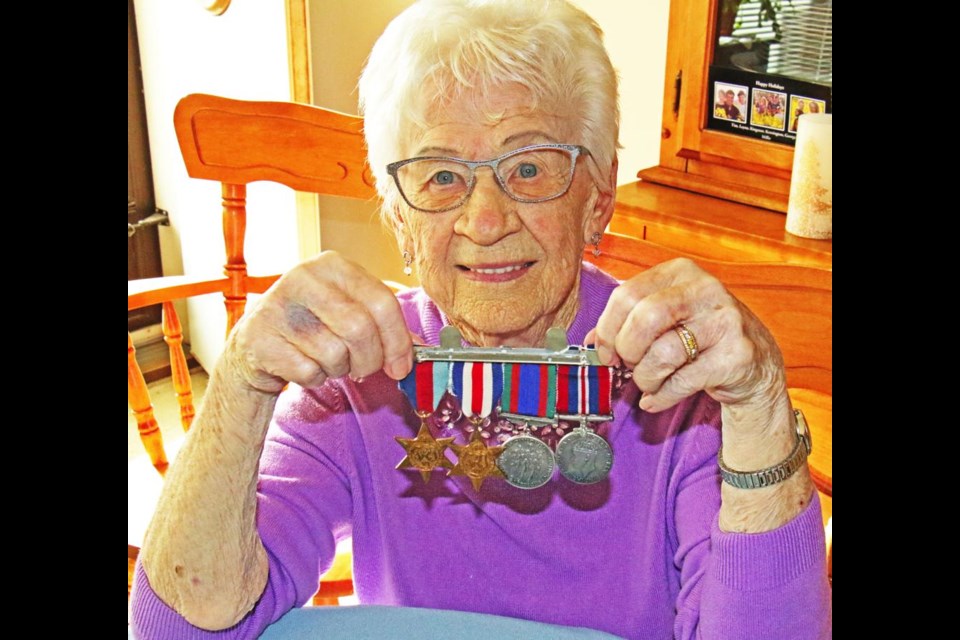Frieda Lillejord will remember her late husband, Melvin, when she pays tribute by laying a wreath for him at the Remembrance Day service on Thursday, Nov. 11, on behalf of all Silver Cross mothers.
She was chosen for this position by the Weyburn branch of the Royal Canadian Legion, as her husband served with the famed South Saskatchewan Regiment during the Second World War.
He joined the SSR early on in the war and after basic training was sent to England to be deployed with the regiment. He served past the end of the war, until March of 1946, when he was discharged with the rank of corporal.
He and Frieda met in 1947 and were married in 1948, and the couple farmed in the Ceylon area. At the time they met, Frieda worked in the old telephone office, and when he walked in, he said, “That’s the girl I’m going to marry.”
For much of their married life, her husband was reluctant to talk very much about what he went through during the war, other than a reference to some horrific event that occurred to men of the SSR. His only remark was the comment, “I was there.”
Melvin passed away at the age of 77 years, after battling cancer, in 1996.
Frieda felt very honoured when Legion chaplain Marj McLeod asked her to serve as the War Mother this year.
“I think it’s still important that we remember our veterans. I hope they keep Remembrance Day going,” she said.
A brief history of the South Saskatchewan Regiment
The amalgamation of two existing regiments, the Weyburn Regiment and the Saskatchewan Border Regiment, brought about the establishment of the South Saskatchewan Regiment on Dec. 15, 1936, and it was mobilized once again as the South Saskatchewan Regiment, C.A.S.F., on Sept. 1, 1939.
The South Saskatchewan Regiment took part in an operation that has not been forgotten, the Dieppe Raid, on Aug. 19, 1942. Brave soldiers from the Regiment pushed over the beach at Dieppe in the early morning and entered the small village of Pourville, France, believing that surprise had been achieved.
To their dismay, however, the Germans had detected the raid and the South Saskatchewan Regiment was met with heavy gun fire by the enemy. By the end of the Dieppe Raid the South Saskatchewan Regiment had suffered 84 casualties.
From Dieppe, the troops moved into Normandy on July 8,1944 as a unit of the Sixth Infantry Brigade, Second Canadian Infantry Division. They were stationed there until the end of the war and were disbanded on Dec.15, 1945.
To commemorate the Regiment's hard work and bravery in the Dieppe Raid, a monument was erected at Pourville, just west of Dieppe, where the Regiment landed on that ill-fated day.


